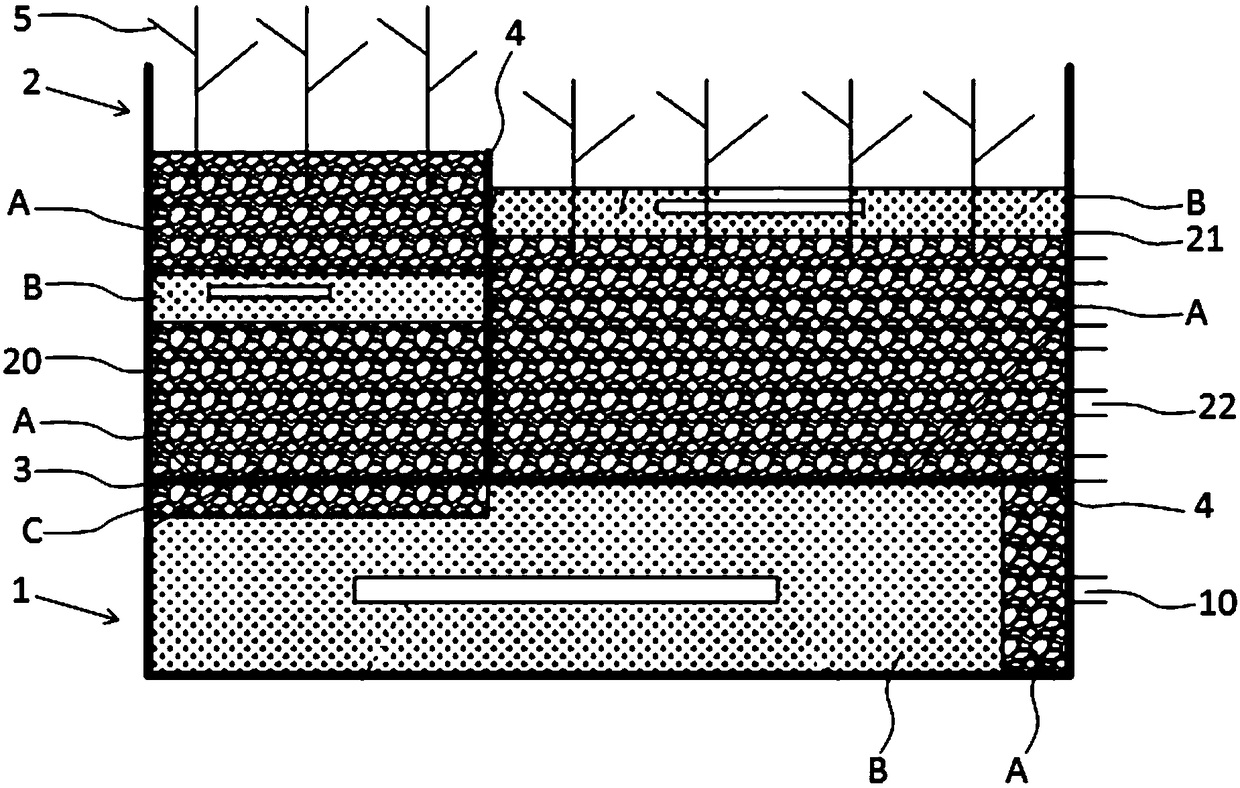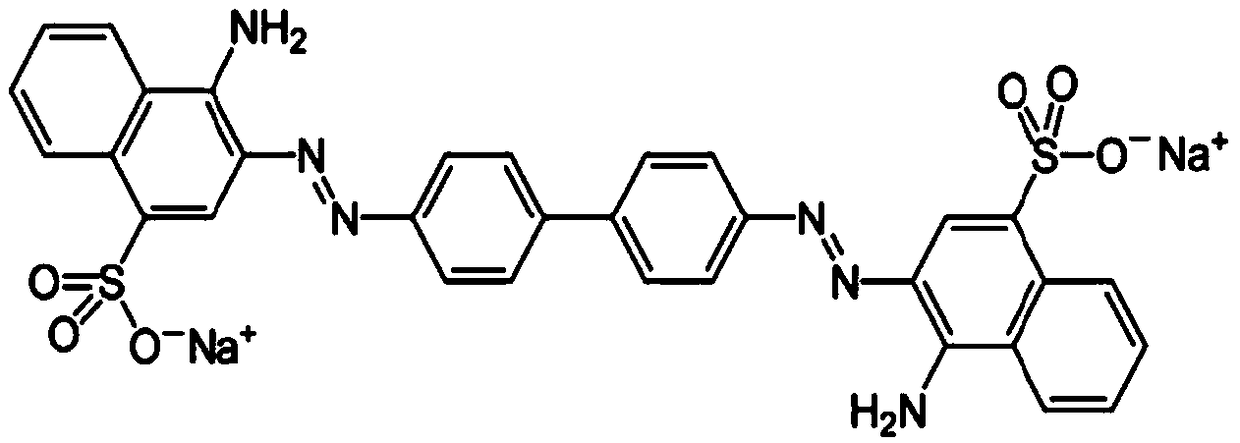A kind of cw-mfc coupling system and its degradation method for azo dye degradation
An azo dye and coupling system technology, applied in chemical instruments and methods, water pollutants, water/sludge/sewage treatment, etc., can solve the problems of toxicity, limited capacity of the cathode area of the coupling device, and increased organic concentration. Achieve the effect of structure and performance optimization, reduction of hydraulic retention time, and simple operation
- Summary
- Abstract
- Description
- Claims
- Application Information
AI Technical Summary
Problems solved by technology
Method used
Image
Examples
Embodiment 1
[0047] The experimental design is as follows:
[0048] The purpose of the experiment: To study the ability and effect of this system when dealing with azo dyes with different types and differences in structure. The target pollutants of this experiment are reactive brilliant red X-3B and Congo red as examples.
[0049] Dye profile:
[0050] The chemical structure of Reactive Brilliant Red X-3B is:
[0051]
[0052] The chemical structure of Congo red is:
[0053]
[0054] Experimental parameters: the volume ratio of the first cathode region 20 to the second cathode region 21 is 5:5, the hydraulic retention time HRT is 3d, and the continuous water inlet operation mode is adopted.
[0055] Experimental content: The concentrations of Reactive Brilliant Red X-3B and Congo in the influent of the two comparative experiments were both 100-300mg / L; glucose was selected as the co-substrate, and the concentration of glucose in the influent was 120mg / L.
[0056] The experimental ...
Embodiment 2
[0058] The experimental design is as follows:
[0059] Purpose of the experiment: adjust the volume ratio of the first cathode area 20 to the second cathode area 21, and determine the optimal concentration range and optimal HRT of the target pollutants that can be treated under different volume ratios. The target pollutants in this experiment are active dyes Take the red X-3B as an example.
[0060] Dye profile:
[0061] The chemical structure of Reactive Brilliant Red X-3B is:
[0062]
[0063] Experimental parameters: the volume ratios of the first cathode area 20 and the second cathode area 21 are set to 3:7, 5:5, and 7:3 respectively, the HRT is 2, 3, and 4d, and the continuous water inlet operation mode is adopted.
[0064] Experimental content: the volume ratios of the first cathode region 20 and the second cathode region 21 in the three comparative experiments were 3:7, 5:5, and 7:3 in sequence; the reactive brilliant red X- 3B corresponds to three concentration r...
PUM
| Property | Measurement | Unit |
|---|---|---|
| particle diameter | aaaaa | aaaaa |
| width | aaaaa | aaaaa |
| width | aaaaa | aaaaa |
Abstract
Description
Claims
Application Information
 Login to View More
Login to View More - R&D
- Intellectual Property
- Life Sciences
- Materials
- Tech Scout
- Unparalleled Data Quality
- Higher Quality Content
- 60% Fewer Hallucinations
Browse by: Latest US Patents, China's latest patents, Technical Efficacy Thesaurus, Application Domain, Technology Topic, Popular Technical Reports.
© 2025 PatSnap. All rights reserved.Legal|Privacy policy|Modern Slavery Act Transparency Statement|Sitemap|About US| Contact US: help@patsnap.com



